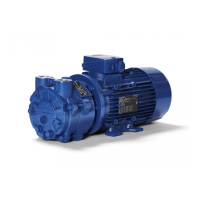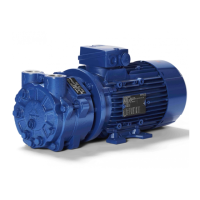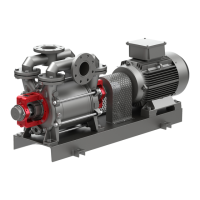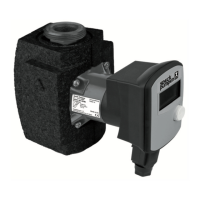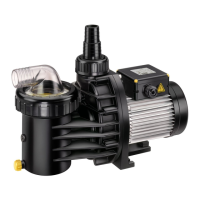Do you have a question about the Speck pumpen V 155 and is the answer not in the manual?
Describes the applications and suitability of SPECK liquid ring vacuum pumps for various gases.
Explains how to find and interpret pump performance data on the nameplate.
Explains the meaning of safety symbols and warning signs used throughout the manual.
Details the necessary qualifications and training for personnel handling the pump.
Outlines the severe hazards to people, environment, and equipment from not following safety guidelines.
Emphasizes the importance of working safely, adhering to regulations, and preventing accidents.
Provides critical safety instructions for users concerning pump operation and handling hazardous materials.
Specifies safety requirements for personnel performing maintenance, inspection, or assembly tasks.
Warns against unauthorized modifications and the use of non-original spare parts, voiding warranty.
States that safe operation is only guaranteed when used as specified, otherwise user bears risk.
Provides guidance on the correct methods for transporting the complete vacuum pump unit.
Recommends storing the pump unit in dry conditions and protecting it from dirt.
Describes the basic design and construction features of the SPECK liquid ring vacuum pumps.
Explains the working principle of the liquid ring vacuum pump and its compression mechanism.
Advises on selecting an appropriate and accessible location for installing the pump unit.
Details the procedures for correctly mounting, leveling, and aligning the pump unit on its foundation.
Provides guidelines for connecting suction, discharge, and operating liquid pipes to the pump.
Specifies requirements for suction pipe installation, including non-return valves and avoiding pressure drop.
Covers discharge pipe installation, focusing on shut-off devices and safe operation.
Details crucial safety precautions and requirements for the electrical connection of the pump.
Introduces different operational modes available for the vacuum pumps.
Explains the standard setup and operation using open circulation cooling with fresh water.
Describes the setup for closed circulation cooling, suitable for specific operating liquids or gases.
Details the setup for continuous cooling, where liquid is not recycled as operating liquid.
Mentions the use of a gas ejector to achieve specific operating points for the vacuum pump.
Provides guidance on installing the liquid separator and selecting the most suitable operating mode.
Outlines essential steps for preparing the pump before initial operation, including filling liquid.
Describes the procedure for safely starting and operating the pump after installation.
Explains how to adjust the flow volume for various operating modes during commissioning.
Details the flow volume adjustment for open circulation cooling based on illustration 2a.
Describes flow volume adjustment for closed circulation cooling as per illustration 3.
Explains flow volume adjustment for continuous cooling as shown in illustration 4a.
Covers flow volume adjustment for automatic systems using illustration 2b.
Provides instructions for safely shutting down and decommissioning the pump.
General operational guidelines, including ring liquid properties and viscosity considerations.
Details the fresh water requirements for different cooling modes and operating conditions.
Explains the causes of cavitation in the pump and methods to prevent it.
Addresses issues related to contaminated operating liquid, deposits, and their removal.
Identifies causes and actions for a pump that runs loudly.
Troubleshooting steps when the pump fails to achieve the specified vacuum capacity.
Diagnoses and resolves issues when the pump becomes blocked.
Addresses causes and solutions for excessive power consumption by the pump.
| Brand | Speck pumpen |
|---|---|
| Model | V 155 |
| Category | Water Pump |
| Language | English |
